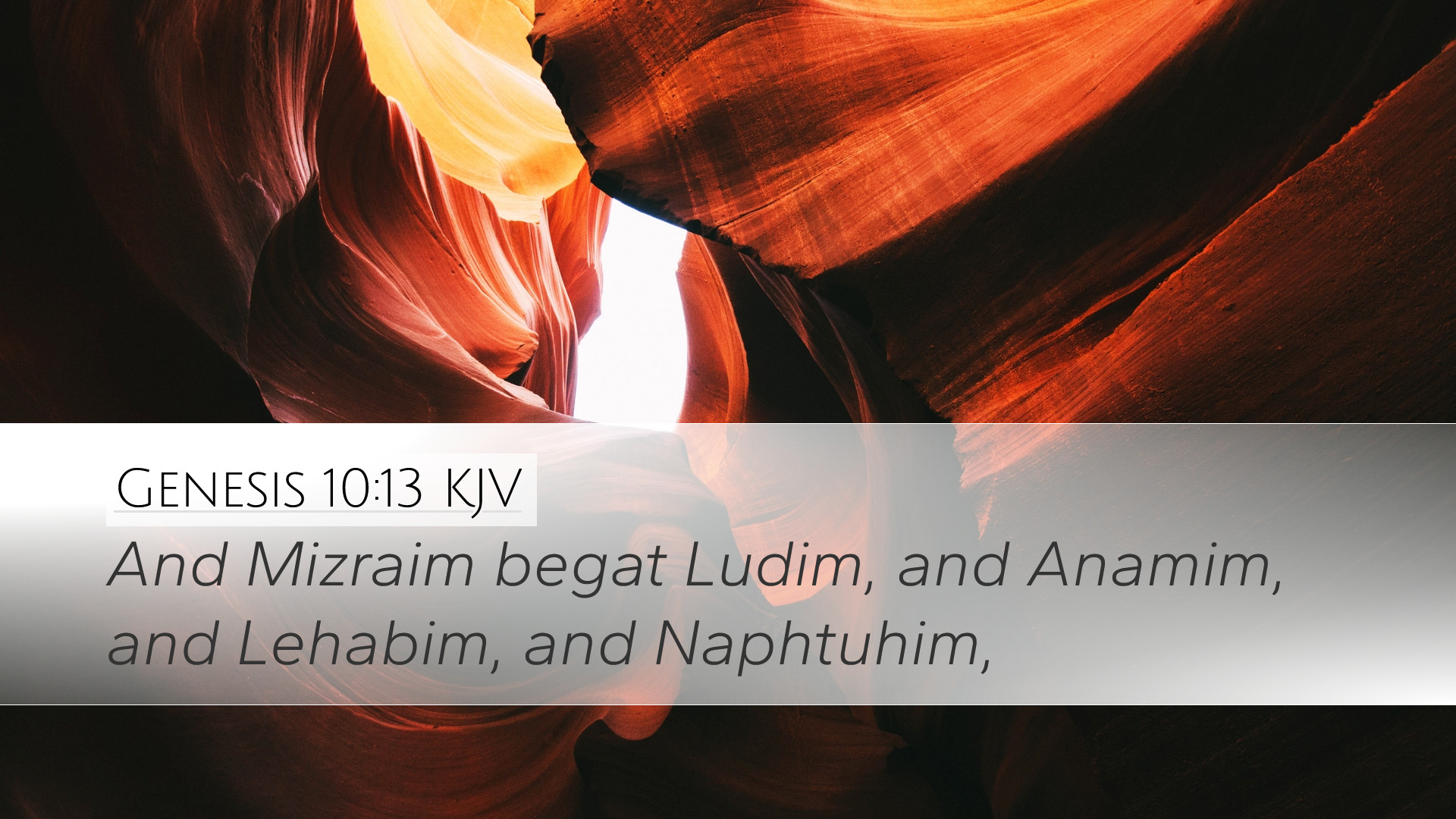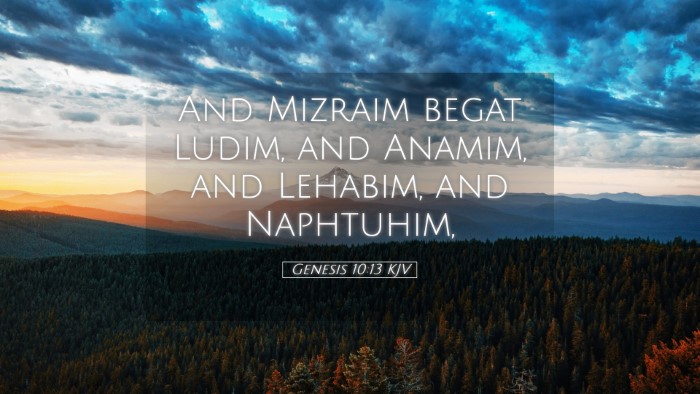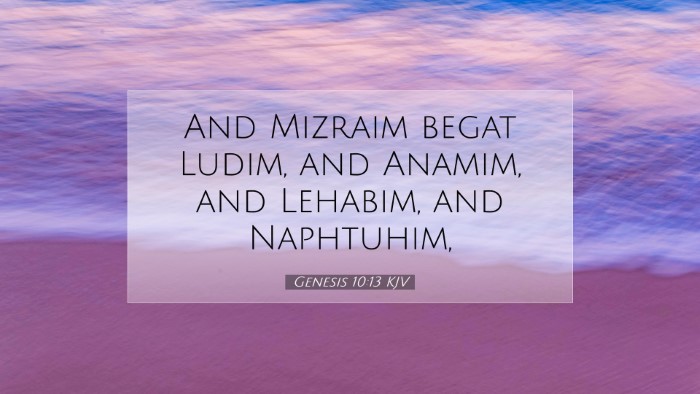Commentary on Genesis 10:13
Verse Context: Genesis 10:13 states, "And Mizraim begat Ludim, and Anamim, and Lehabim, and Naphtuhim." This verse appears in the genealogical table of the sons of Noah, illustrating the descendants of Ham and tracing the origins of various nations.
Historical Background
The account in Genesis 10, often referred to as the Table of Nations, provides a framework for understanding the spread of humanity after the Flood. Mizraim, representing Egypt, is significant in biblical history and serves as a symbol of both oppression and promise.
Matthew Henry reflects on the importance of this genealogy in establishing a historical and cultural record, noting that the names mentioned here provide insight into the early population distribution of the earth and the geographical roots of certain nations.
Interpretation of Key Names
-
Mizraim: Often associated with Egypt, this name signifies duality, as "Mizraim" is typically understood to refer to both Upper and Lower Egypt.
-
Ludim: Generally understood to relate to the people associated with the region of Lydia in Anatolia; some scholars believe they may have been known for their strength in warfare.
-
Anamim: The origin of this name is unclear; however, it suggests a group or tribe whose legacy is hinted at but not elaborated upon in detail elsewhere in biblical texts.
-
Lehabim: Possibly connected to the Libyans, this name points to the complexities of cultural identities within the African context.
-
Naphtuhim: Thought to be the ancestors of the inhabitants of the Nile Delta; their inclusion underscores the rich diversity of peoples emerging from the descendants of Ham.
Theological Significance
The genealogies in the Bible, particularly in Genesis, serve more than a historical purpose. Albert Barnes explains that these lineages reflect God's overarching plan for the redemption of mankind. The mention of Mizraim and his descendants illustrates the complexity of divine craft in human history and ethnic diversity.
This verse exemplifies how God orchestrates the unfolding of human history towards His purposes, each name representing not merely a lineage, but a narrative of divine providence interwoven with the fabric of human choices and circumstances.
Lessons for Today
The relevance of Genesis 10:13 transcends mere historical inquiry; it speaks to the unity and diversity found in the body of Christ. Adam Clarke posits that understanding our origins fosters greater appreciation for our shared humanity. This chapter emphasizes that every nation and people has a place in God's plan, calling believers to recognize and embrace the multiplicity of cultures within the church.
Ultimately, interpreters are reminded that though these names may not seem significant, they reveal the faithfulness of God as He fulfills His promises to humanity. Pastors and theologians may draw from this understanding, preaching about the importance of heritage, identity, and divine purpose.
Conclusion
Genesis 10:13 is a pivotal verse that connects the past to the present, showing how the genealogies serve not just as academic references, but as a testament to God’s ongoing narrative within creation. The rich tapestry of names invites deeper contemplation about God's power in history and His plans for humanity, urging readers to consider their place within this grand design.
Each generation stands upon the foundations laid by their ancestors; thus, as we explore these genealogies, we are reminded of our calling to honor our heritage while looking forward to the future that God has prepared for us.


